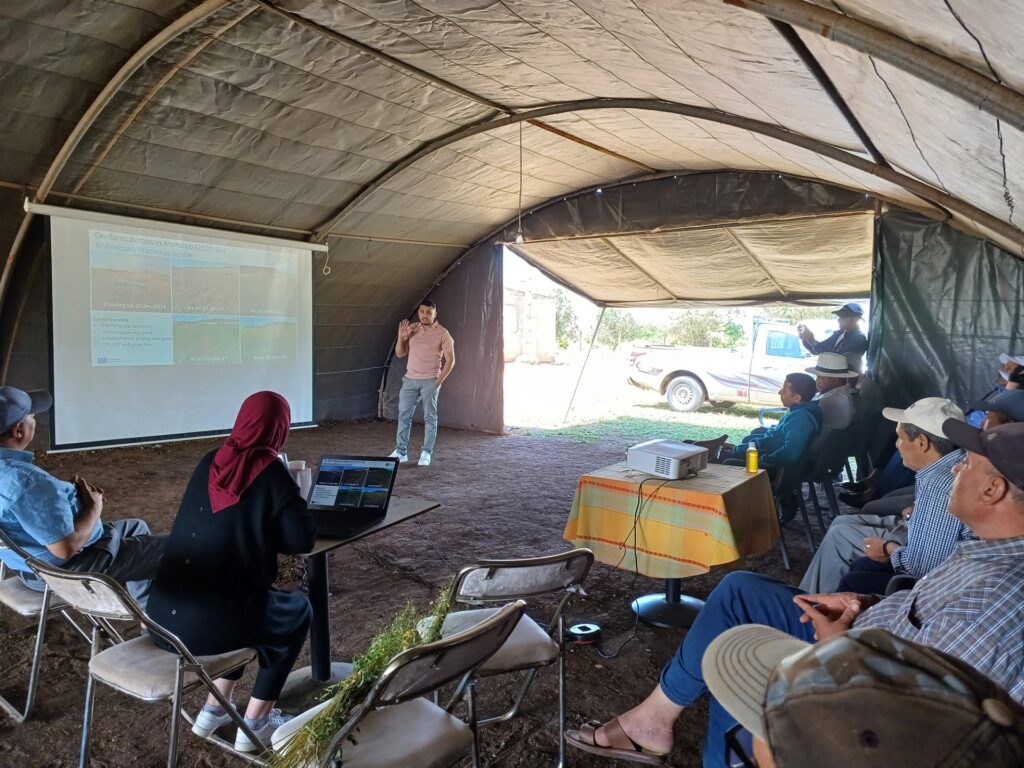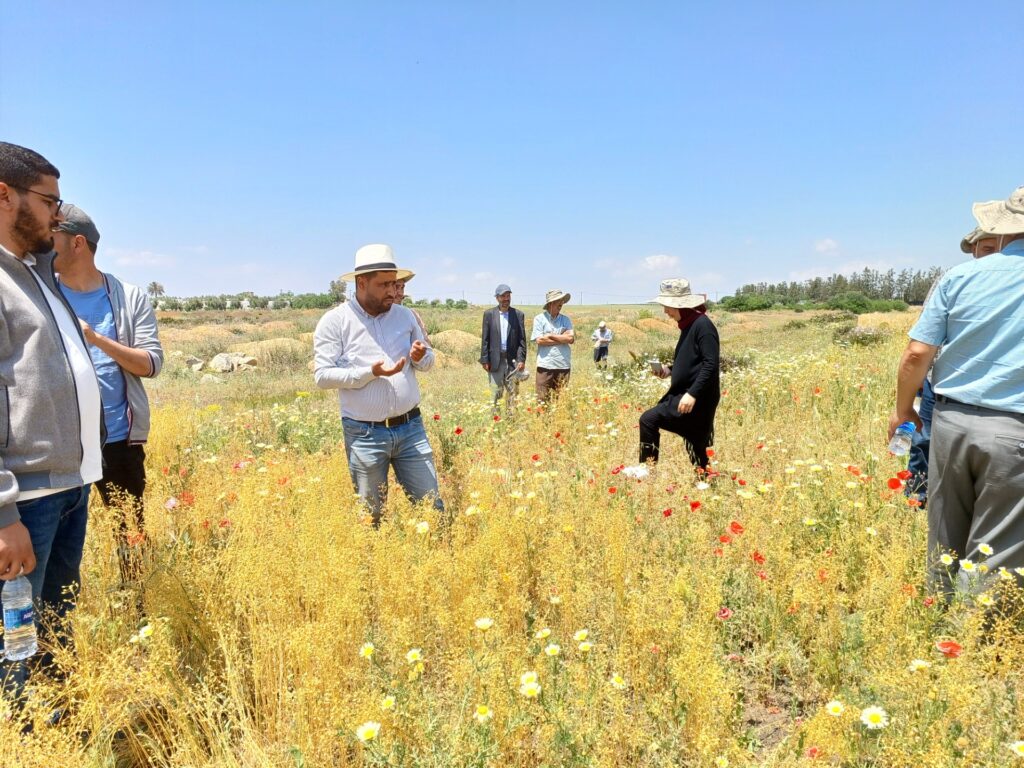On April 29, 2025, a Lighthouse, stakeholder meeting and demonstration event was held in Brachoua, a commune in the Khémisset Province of Morocco’s Rabat-Salé-Kénitra region, as part of the CARINA Project.
The event was organized by ICARDA in collaboration with ONCA (Office National du Conseil Agricole, Ministry of Agriculture, Morocco) and the Cooperative Flahti Bla Dwa at the cooperative’s premises. A total of 18 participants took part, including 16 local stakeholders, lead farmers, representatives from the cooperative, and ONCA, as well as two ICARDA representatives (a scientist and a technician).

The meeting began with welcoming remarks and an introduction to the CARINA project by Dr. Sripada Udupa (ICARDA), who presented the project’s objectives, key activities to date, and results from other pilot sites. Dr. Udupa emphasized the importance of diversifying cereal-based cropping systems in Morocco by introducing oilseed crops such as camelina and carinata. These crops offer several advantages, including suitability for marginal lands, low water requirements, and strong weed suppression. Their main valorisation is for the production of biofuels such as biodiesel and biokerosene, and the protein-rich camelina cake also holds promise as an ingredient in animal feed.
Two lead farmers shared their experiences with camelina cultivation:

Participants then conducted a field visit to the camelina plots. The crop’s resilience, especially under drought conditions, drew particular attention when compared to traditional crops like wheat. Mr. Akif guided visitors through the trials and demonstrated camelina’s planting and cultivation techniques.
Discussions focused on:
The event concluded with printed materials distributed to all attendees, including project flyers and a selection of key slides. Notably, many farmers expressed interest in cultivating camelina in the upcoming season, signaling a positive step forward for sustainable agriculture and crop diversification in the region.

SUBSCRIBE TO A NEWSLETTER
Funded by the European Union. Views and opinions expressed are however those of the author(s) only and do not necessarily reflect those of the European Union or the European Research Executive Agency. Neither the European Union nor the granting authority can be held responsible for them.